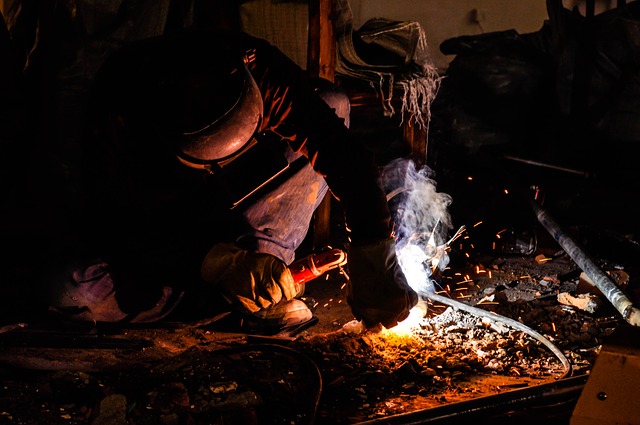When your workplace poses electrical and fire hazards, purchasing the right workwear is a necessity. Since personal protective equipment (PPE) is regulated by governing bodies, it’s inevitable that acronyms and other jargon often goes with it.
We’ve created a reference guide to help you understand how protective clothing and equipment is regulated and to help you cut through the alphabet soup.
What government agency oversees workplace safety?
The Occupational Health and Safety Act (OSHA) of 1970 covers most private sector workers in all 50 states Many states also have their own State Plans, which must be at least as effective as federal OSHA.
OSHA exists to assure safe and healthful working conditions. Its two regulatory functions are to set standards and to perform inspections. It also provides training, outreach, education and assistance.
OSHA often adopts standards that have been developed by standard-developing organizations and codifies them into laws and regulations. This is the case with PPE.
Who Develops Standards for Fire-Resistant and Arc-Rated PPE?
In the U.S., two key organizations develop standards on clothing that protects workers from fire and electrical hazards.
- The National Fire Protection Association (NFPA) is a global nonprofit organization that works to “eliminate death, injury, property and economic loss due to fire, electrical and related hazards.” In addition to providing research, training and education , NFPA shares information through its more than 300 consensus codes and standards. NFPA has developed standards that establish minimum requirements for protection against fire and electrical hazards, including standards for PPE. The standard for fire safety is NFPA 70E, and the standard for electrical safety is NFPA 2112.
- ASTM International is a nonprofit organization that has developed 12,000 consensus standards materials, products, systems, and services. ASTM standards are used in a variety of ways by individuals, companies, and other institutions, including governments, which often codify the standards into laws and regulations. The ASTM standard for arc- and flame-resistant rainwear is ASTM 1891.
- Both NFPA and ASTM are accredited by the American National Standard Institute (ANSI) which promotes and facilitates voluntary consensus standards and ensures their integrity.
What is the standard for Flame Resistant (FR) PPE?
NFPA 2112 is the standard that protects workers from flash fire exposure and injury by specifying performance requirements and test methods for flame-resistant garments, shrouds/hoods/balaclavas, and gloves for use by industrial personnel. Compliance with NFPA 2112 may not be self-declared; Compliance must be certified by an accredited testing laboratory not owned or controlled by the manufacturer or the vendors of the product being certified and can not have a monetary interest in the product’s profitability.
All flame-resistant items must be labeled in accordance with the standard, and the certification organization’s label, symbol, or identifying mark needs to be attached to the product label, be a part of the product label, or be immediately adjacent to the product label.The title of NFPA 2112 is Standard on Flame-Resistant Clothing for Protection of Industrial Personnel Against Short-Duration Thermal Exposures from Fire. The standard is available at NFPA.org. (Arc Wear)
What is a flash fire?
NFPA 2112 defines flash fire as, “A type of short-duration fire that spreads by means of a flame front rapidly through a diffuse fuel, such as dust, gas, or the vapors of an ignitable liquid, without the production of damaging pressure.”
What is the standard for Arc-Rated (AR) PPE?
NFPA 70E is the standard for electrical safety. This standard helps companies and employees avoid workplace injuries and fatalities due to shock, electrocution, arc flash, and arc blast, and assists in complying with OSHA 1910 Subpart S and OSHA 1926 Subpart K. Manufacturers may self-declare their products to be compliant with NFPA 70E or may have them tested by an independent accredited testing organization.
What is an Arc Flash?
The NFPA 70E defines an arc flash hazard as “a source of possible injury or damage to health associated with the release of energy caused by an electric arc.”
What is an Arc Rating?
Sometimes referred to as a ‘cal-rating’, an arc rating is a value that describes a material’s performance to exposure to an electrical arc discharge. The arc rating is expressed in cal/cm2 and is derived from the determined value of the arc thermal performance value (ATPV) or energy break open threshold (EBT), whichever is lower.
This is an example of how an arc (or cal) rating is stated when describing a garment:This garment has an arc rating of ATPV 8.6 calories/cm^2.
How do I know what arc rating I need in a garment?
NFPA 70E requires employers to establish a “flash protection boundary,” which is an approach limit from an arc source at which incident energy equal 1.2 cal/cm2 When workers are working within the boundary or on live equipment, they must wear PPE that correlates to the level of risk exposure.
Employers may select arc flash PPE using one of two methods: either the incident energy analysis method or the arc flash PPE category method.
Who determines if AR and FR PPE meets NFPA and ASTM standards?
It depends. Some standards may be self-declared by the manufacturer, o. Others must be tested by an independent third party. There are many third-party testing organizations, one of which is UL. UL is a third party organization that offers an array of services that includes inspection and testing. With respect to workwear, UL tests personal protection equipment (PPE) and certifies its its with compliance with various standards, including ANSI/NFPA, ASTM, CAN/CSA, CAN/CGSB and ANSI/ISEA standards. Third-party certification is necessary to achieve compliance with NFPA requirements. A product given a UL certification can carry the UL mark.
Are FR and AR PPE the same thing?
No. Although manufacturers and retailers sometimes use “FR” to refer to the category of clothing that provides protection from fire and/or electrical hazards, flame-resistant (FR) PPE and arc-rated (AR) PPE are not the same.
While arc-rated clothing will provide flame-resistance, flame-resistant clothing may not have an no arc rating.
How do I know if my PPE meets the NFPA 70E standard?
Suppliers and manufacturers must provide several items of information on the PPE, including the product performance to which the product conforms and the arc rating where appropriate.
Example of PPE Category mark: CAT 2 Example of arc rating: ATPV 8.6 calories/cm^2
What is the standard for Arc- and Flame-Resistant Rainwear?
ASTM 1891 is the Standard Specification for Arc- and Flame-Resistant Rainwear. This specification establishes applicable test methods, minimum physical and thermal performance criteria, a suggested sizing guide, and suggested purchasing information for rainwear for use by workers who may be exposed to thermal hazards of momentary electric arcs and open flames. To download the full ASTM 1891 standard, visit the ASTM site.
What is Inherently Flame-Resistant Fabric?
Inherently flame-resistant fabrics are fabrics whose actual structure is not flammable. Examples are Nomex® and Kevlar®, which are manufactured by duPont®.
What is Treated FR Fabric?
These fabrics are treated with a chemical additive to make them flame-resistant. The flame-resistance can be adversely affected by factors such as laundering technique.
What is Modacrylic?
Modacrylic is a synthetic fiber that is flame-resistant. Modacrylic fibers are produced outside the U.S. by three companies.
To find flame-resistant and arc-resistant gear that will offer you protection, visit workingperson.com.




